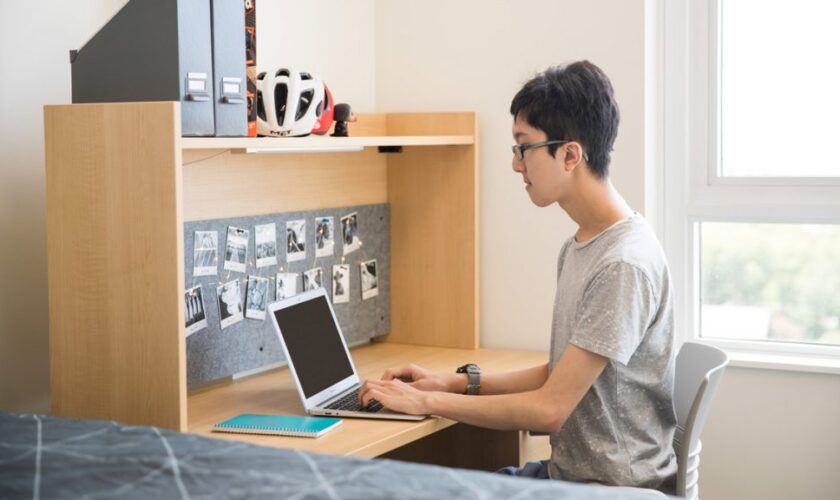Parental guidance plays a crucial role in a child’s educational journey, particularly in the diverse and dynamic environment of an international school. Their involvement is pivotal in navigating the unique challenges and opportunities presented by international education. In such a form of institution, maintaining robust parental guidance can be a not-so-secret way to foster academic success, emotional well-being, and cultural adaptability in students.
Academic Support and Guidance
In an international school in Singapore, the curriculum and teaching methodologies can differ significantly from those in local schools. Parents need to understand these differences and provide the necessary support to help their children thrive academically. This understanding can be achieved by familiarising themselves with the curriculum, attending school meetings, and maintaining regular communication with teachers.
Parental involvement can also mean creating a conducive learning environment at home. This includes setting aside time for homework, encouraging a reading habit, and providing resources that complement the school’s curriculum. Parents who engage actively in their child’s academic life tend to have children who perform better academically. In the context of an international school in Singapore, this involvement is particularly crucial due to the competitive and high-achieving nature of the educational landscape.
Moreover, parents can help their children set realistic academic goals and develop effective study habits. By offering consistent support and motivation, parents can instil a sense of responsibility and a love for learning in their children. This guidance not only enhances academic performance but also prepares students for future educational challenges.
ALSO READ: Choosing an International School in Singapore: 6 Factors to Consider
Emotional and Social Well-Being
The multicultural environment of an international school can be both enriching and challenging for students. Parental guidance is vital in helping children navigate the social dynamics and emotional stresses that come with such a diverse setting. Parents need to be aware of the potential social challenges their children might face and provide the necessary support to overcome them.
For instance, children might experience culture shock or feel isolated in a new environment. In such cases, parents can play a supportive role by encouraging their children to participate in school activities, fostering friendships, and promoting cultural understanding and sensitivity. Regular discussions about their experiences at school can also help parents identify any emotional issues early on and address them promptly.
Encourage a healthy balance between academics and extracurricular activities. Participation in sports, arts, and other hobbies can significantly enhance a child’s social skills and emotional well-being. In an international school setting, these activities also provide valuable opportunities for cultural exchange and personal growth.
Cultural Adaptability and Global Citizenship
One of the key benefits of attending an international school in Singapore is the exposure to a multitude of cultures and perspectives. Parental guidance is essential in helping children make the most of this unique opportunity. Parents can encourage their children to be open-minded and respectful of different cultures, thereby fostering a sense of global citizenship.
Engaging with the school community is one-way parents can promote cultural adaptability. Attending school events, volunteering for school activities, and participating in cultural celebrations are excellent ways to support their children’s integration into the international school environment. These activities also provide parents with insights into the diverse cultural dynamics at play in the school.
Parents must reinforce the values of empathy, tolerance, and respect at home. By discussing global issues and encouraging their children to think critically about different cultural perspectives, parents can help their children develop a well-rounded worldview. This cultural adaptability not only enriches the student’s school experience but also prepares them for future global interactions.
Partnership with the School
A strong partnership between parents and the international school is fundamental to a child’s success. Parents should actively engage with the school’s initiatives and policies to ensure their children receive the best possible education and support. This partnership involves regular communication with teachers and school administrators, attending parent-teacher meetings, and staying informed about school events and developments.
In a place where the educational environment is dynamic and constantly evolving, this partnership is even more crucial. By working closely with the school, parents can ensure that their children’s needs are met, both academically and emotionally. This collaborative approach helps create a supportive and nurturing environment that benefits the entire school community.
Additionally, parents can contribute to the school’s community by sharing their own experiences and expertise. Whether through guest lectures, workshops, or volunteering, parents’ involvement can enrich the school’s cultural and educational offerings. This active participation not only supports their children but also enhances the overall learning environment for all students.
Conclusion
Maintaining strong parental guidance is essential for students in an international school in Singapore. Parents play a critical role in supporting their children academically, emotionally, and culturally. By staying actively involved in their children’s education and fostering a supportive home environment, parents can help their children thrive in the dynamic and multicultural setting of an international school.
For parents considering an international school in Singapore, visiting EtonHouse can provide valuable insights into how strong parental guidance can enhance their children’s educational journey. Contact EtonHouse today to learn how you can support your child’s success in an international school environment.















